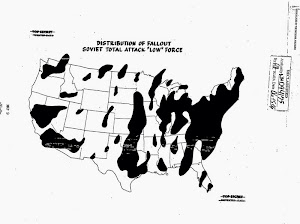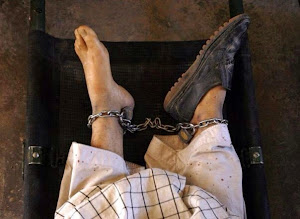Drone blowback is real. Over the past five years, terrorists have attempted serious attacks on American soil that were motivated in part by U.S. drone strikes abroad. We know this because the apprehended terrorists have been loud and clear about their motives.
As Pakistani-born Faisal Shahzad, whose car bomb failed to explode in Times Square in May 2010, said at his arraignment:
Until the hour the U.S. pulls its forces from Iraq and Afghanistan and stops the drone strikes in Somalia and Yemen and in Pakistan and stops the occupation of Muslim lands … we will be attacking U.S. The drone hits in Afghanistan and Iraq, they don’t see children … They kill women, children — they kill everybody.
A foiled plot to blow up the New York subway, led by Afghan-born, Queens-raised Najibullah Zazi, also speaks to the growing anger over drone warfare.According to courtroom testimony from the would-be perpetrators, they conceived their effort as revenge for the drone attacks in northwestern Pakistan, where U.S. strikes have killed some 2,800 people. Just how many of those killed were Al-Qaeda fighters and how many civilians is not precisely known. But the connection between drones abroad and danger at home is not hypothetical: It’s a demonstrable fact. And yet our national security experts tend to treat these attempted terrorist attacks as if they were of no relevance to Washington’s increasing use of lethal unmanned aircraft.
Pure fanaticism
Last month the Stimson Center, a defense-industry-funded think tank issued what is only the latest report to take a remarkably blasé attitude toward the homeland security liabilities of drone strikes abroad. In fact, the report, “Recommendations and Report of the Drone Policy Task Force” makes no mention of Shahzad or Zazi. It is baffling that the task force, co-led by retired U.S. Army Gen. John Abizaid and Georgetown law professor Rosa Brooks, chose to ignore the attempts on Times Square and the New York subway. Do they perhaps think that what motivated a couple of near-miss terrorist attacks is of no importance?
The U.S. national security establishment hypes and magnifies anything remotely resembling a terrorist plot when it’s time to justify security agency budgets and surveillance programs. But when assessing the security costs of U.S. military violence, these terrorist plots suddenly become invisible. This is in part because the acknowledgment of any motive for terrorism stemming from U.S. foreign policy — any motive other than pure evil or pure fanaticism, of course — is huffily condemned by the natsec establishment as excuse-making and perhaps even sympathy: Tout comprendre, c’est tout pardonner. This is, of course, obtuse; knowing why John Wilkes Booth killed Abraham Lincoln won’t turn you into a neo-Confederate.
Making connections between U.S. violence abroad and retaliatory violence at home should not be controversial, especially when it is a matter of national security. And yet touching these two wires together is, for today’s security pundits, a deeply internalized taboo. The liberal Brennan Center’s 2011 reporton Muslim radicalization, for instance, mentions in passing Shahzad’s attempted bombing but is careful to say nothing about his plainly stated (and widely reported) motive — a bizarre omission in a report dedicated to understanding what turns people into terrorists.
For its part, a 2010 report by the Center for Strategic and International Studies (CSIS) on homegrown extremism floats a connection between Muslim discontent and U.S. foreign policy, only to torpedo it as a “misperception.” To credit the motivating force of U.S. violence overseas, the report argues, is to buy into “the Al-Qaeda-driven narrative” of an American war with all of Islam.
The CSIS authors are of course correct that the U.S. is not waging a war against the Muslim faith in general — no matter what some American generals, clergyand law enforcement officials like to say. But is also true that Washington has, in the past 10 years, waged war or semiwar in such majority-Muslim lands as Afghanistan, Iraq, Yemen, Libya, Pakistan and Somalia, all the while lavishly arming Egypt’s authoritarian dictatorships, the Israeli occupation of the Palestinian territories and the Sunni overlords of Bahrain. A war on Islam is indeed a misperception, but it would be foolish to think that so much military violence will not beget a violent reaction.
If drone strikes are a security liability for the United States, then all other arguments in their favor are moot.
Given the well-documented blowback attacks, one might expect plenty of forthright opposition to drone strikes on strategic grounds. But American liberals don’t have a lot to say about these security consequences. They’d rather talk about more high-minded matters, such as how to regulate drones. When prestigious media outlets such as The New York Review of Books writes about drones, the criticism sticks largely to questions of legal procedure. (Most of the magazine’s “13 Questions for John O. Brennan,” director of CIA, were about the legal aspects of drone assassinations.)
Such commentary leaves the impression that had the strikes been carried out with more due diligence and transparency, there would be nothing wrong with them. By confining dissent mainly to procedural grounds, liberals tacitly affirm the assumption that drone strikes are an unalloyed benefit for homeland security — an assumption that is not grounded in data, even if the Stimson Center report optimistically conjectures that drone assassinations “may have helped keep the homeland free of major terrorist attacks.”
To its credit, that report does fret about the long-term strategic effects of increased use of drones — notably, that unmanned aerial vehicles are fast becoming a first resort to any crisis. When U.S. drones were first put to use 10 years ago in Pakistan, it was for the narrowly defined purpose of killing the leadership of Al-Qaeda. But the U.S. government has since quickly rushed drones into serving a much wider array of other goals and aims, as Micah Zenko of the Council on Foreign Relations and others have documented, including assassinating low-level Al-Qaeda soldiers and helping the Pakistani government kill armed insurgents that threaten its rule. Lately the White House has announced a number of vague missions for drones in Iraq and Syria, from force protection to guarding infrastructure.
No strategy
Drones have killed some Al-Qaeda leaders and plenty of low-level insurgents along with the civilians of several nations. But if drones are actively harmful to the Unites States’ reputation abroad and its security at home, what are these assassinations worth? Strategy is not trumped by tactical operations, no matter how technologically sophisticated they may be. But then “strategy” is perhaps too dignified a term for Washington’s undisciplined and spasmodic efforts at global, open-ended counterinsurgency — unless their aim is to spread and foment terrorism, not curb it. As James A. Russell of the Naval Postgraduate School has written, drones are a clear example of tactics in aimless search of a strategy.
To be sure, the strategic balance sheet of risk and security is not the sole criterion for judging drone strikes or any other military tactic. But it is the threshold question. If drone strikes are, on the whole, a security liability for the United States, if they increase the risk of terrorist attack rather than diminish it, then all other arguments — moral, legal, procedural — are moot, however toothsome they may be to pundits, jurists and think tankers for hire.
The Stimson report, like others before it, concludes by calling for a “rigorous strategic review.” What else were they going to say? But given the well-documented reality of drone blowback attempts on the homeland, it is already clear enough that this tactic is harmful to U.S. security. And the real purpose of drone strikes has always been to protect the United States — right? More
The views expressed in this article are the author's own and do not necessarily reflect Al Jazeera America's editorial policy.







